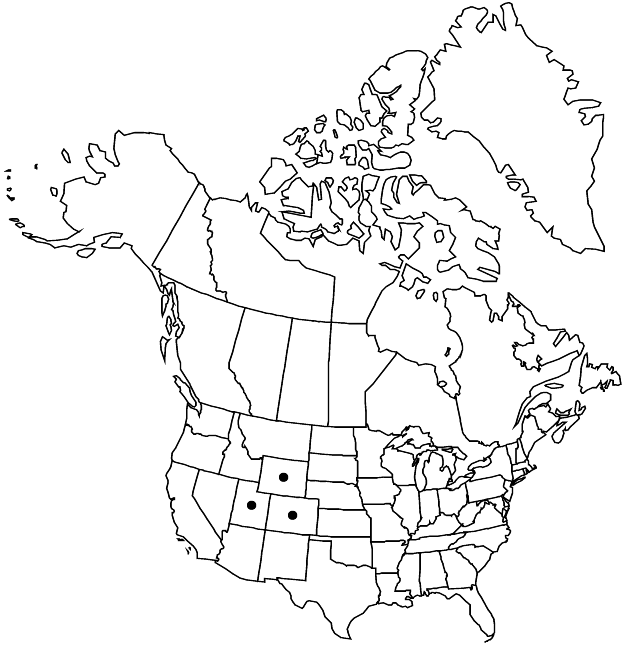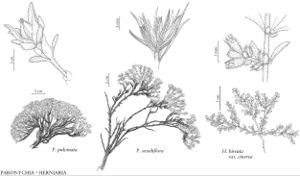Paronychia pulvinata
Proc. Acad. Nat. Sci. Philadelphia 15: 58. 1864.
Plants perennial, densely cespitose, cushion-forming; caudex much-branched, woody. Stems prostrate, much-branched, 5–10 cm, puberulent. Leaves: stipules ovate, 3–6 mm, apex subobtuse, entire; blade narrowly elliptic-oblong or oblong to narrowly elliptic-oblanceolate, 2–5 × 0.2–1.8 (–2) mm, fleshy, apex obtuse to subacute, glabrous. Flowers mostly solitary at end of shoots, almost concealed by leaves. Flowers 5-merous, elliptic-oblong, with enlarged hypanthium and calyx straight to tapering distally, 2.5–2.8 mm, densely appressed-puberulent, sparsely so distally; sepals whitish to green, veins absent, narrowly oblong to ovate-oblong, 1.5–1.7 mm, papery to herbaceous, margins white, 0.2–0.3 mm wide, papery, apex with subterminal awn, hood ascending as continuation of sepal, broadly rounded to notched, awn erect, white, 0.3–0.6 (–1) mm, ± glabrous spine; staminodes filiform, 0.7–0.9 mm; style 1, cleft in distal 1/3, 0.8–1 mm. Utricles ovoid, 1.3–1.5 mm, smooth, glabrous. 2n = 32.
Phenology: Flowering summer.
Habitat: Rocky slopes and summit screes in alpine regions
Elevation: 3300-4200 m
Distribution

Colo., Utah, Wyo.
Discussion
Selected References
None.
Lower Taxa
"/10" is not declared as a valid unit of measurement for this property. "/10" is not declared as a valid unit of measurement for this property.
